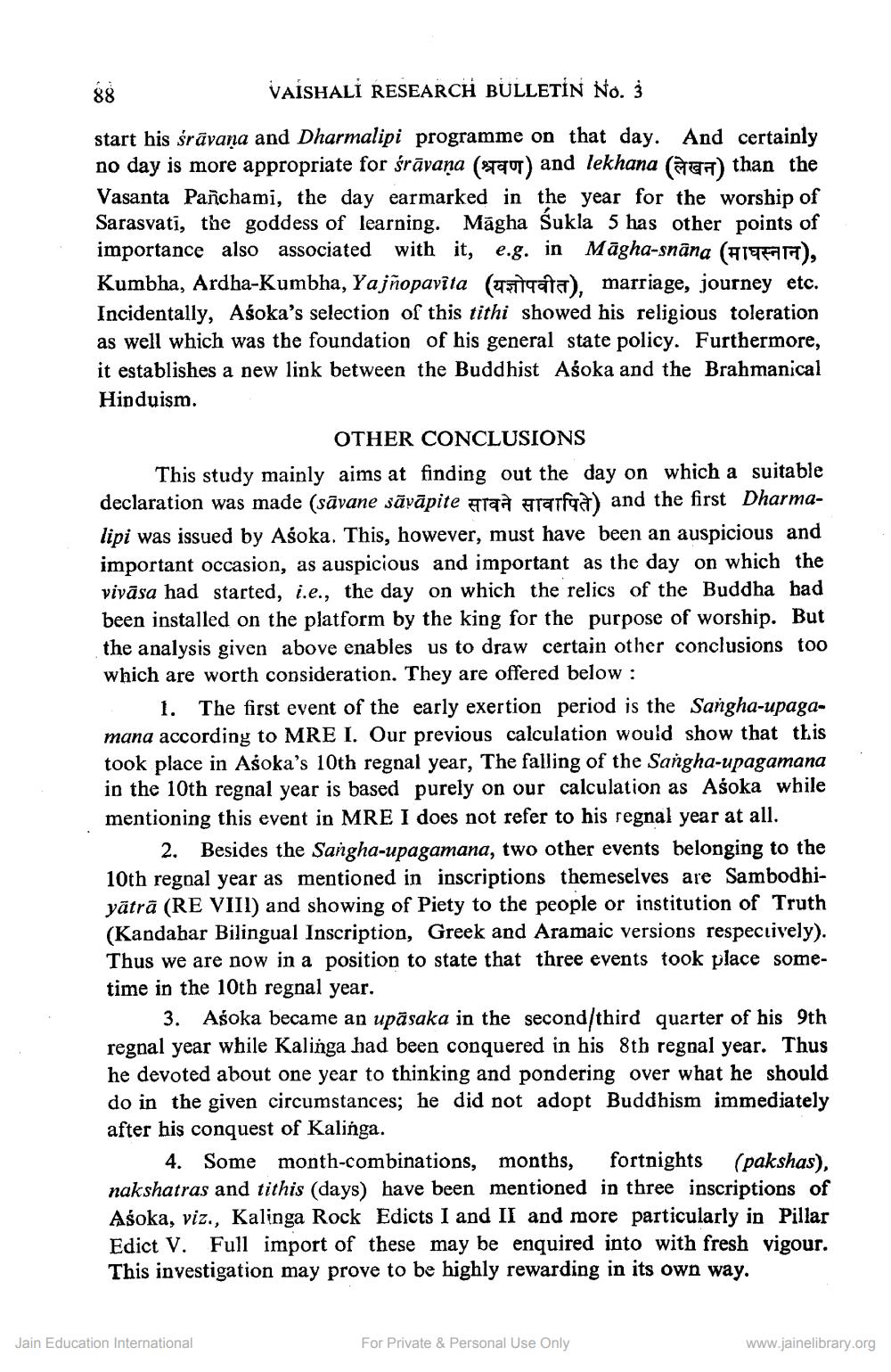________________
88
VAISHALİ RESEARCH BULLETÍN No. Ź
start his śrāvana and Dharmalipi programme on that day. And certainly no day is more appropriate for śrāvana (qu) and lekhana (@ch) than the Vasanta Panchami, the day earmarked in the year for the worship of Sarasvati, the goddess of learning. Mágha Sukla 5 has other points of importance also associated with it, e.g. in Māgha-snāna (HTTFF), Kumbha, Ardba-Kumbha, Yajñopavita (atqata), marriage, journey etc. Incidentally, Asoka's selection of this tithi showed his religious toleration as well which was the foundation of his general state policy. Furthermore, it establishes a new link between the Buddhist Asoka and the Brahmanical Hipduism.
OTHER CONCLUSIONS This study mainly aims at finding out the day on which a suitable declaration was made (sāvane sāvāpite Arad Araraa) and the first Dharmalipi was issued by Aśoka. This, however, must have been an auspicious and important occasion, as auspicious and important as the day on which the vivāsa had started, i.e., the day on which the relics of the Buddha had been installed on the platform by the king for the purpose of worship. But the analysis given above enables us to draw certain other conclusions too which are worth consideration. They are offered below :
1. The first event of the early exertion period is the Sangha-upagamana according to MRE I. Our previous calculation would show that this took place in Asoka's 10th regnal year, The falling of the Sangha-upagamana in the 10th regnal year is based purely on our calculation as Asoka while mentioning this event in MRE I does not refer to his regnal year at all.
2. Besides the Sangha-upagamana, two other events belonging to the 10th regnal year as mentioned in inscriptions themeselves are Sambodhiyātrā (RE VIII) and showing of Piety to the people or institution of Truth (Kandahar Bilingual Inscription, Greek and Aramaic versions respectively). Thus we are now in a position to state that three events took place sometime in the 10th regnal year.
3. Asoka became an upāsaka in the second/third quarter of his 9th regnal year while Kalinga had been conquered in his 8th regnal year. Thus he devoted about one year to thinking and pondering over what he should do in the given circumstances; he did not adopt Buddhism immediately after his conquest of Kalinga.
4. Some month-combinations, months, fortnights (pakshas), nakshatras and tithis (days) have been mentioned in three inscriptions of Asoka, viz., Kalinga Rock Edicts I and II and more particularly in Pillar Edict V. Full import of these may be enquired into with fresh vigour. This investigation may prove to be highly rewarding in its own way.
Jain Education International
For Private & Personal Use Only
www.jainelibrary.org




